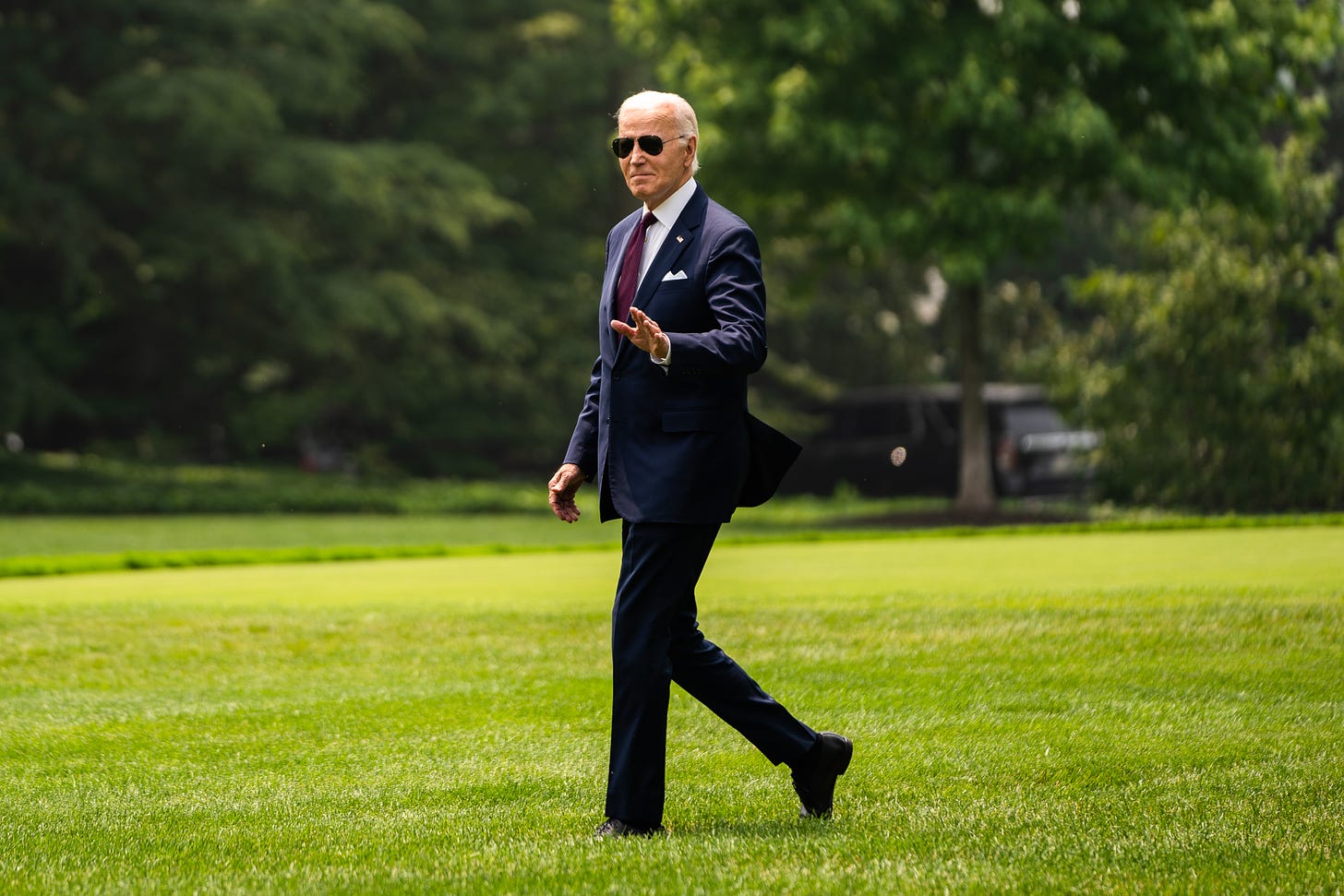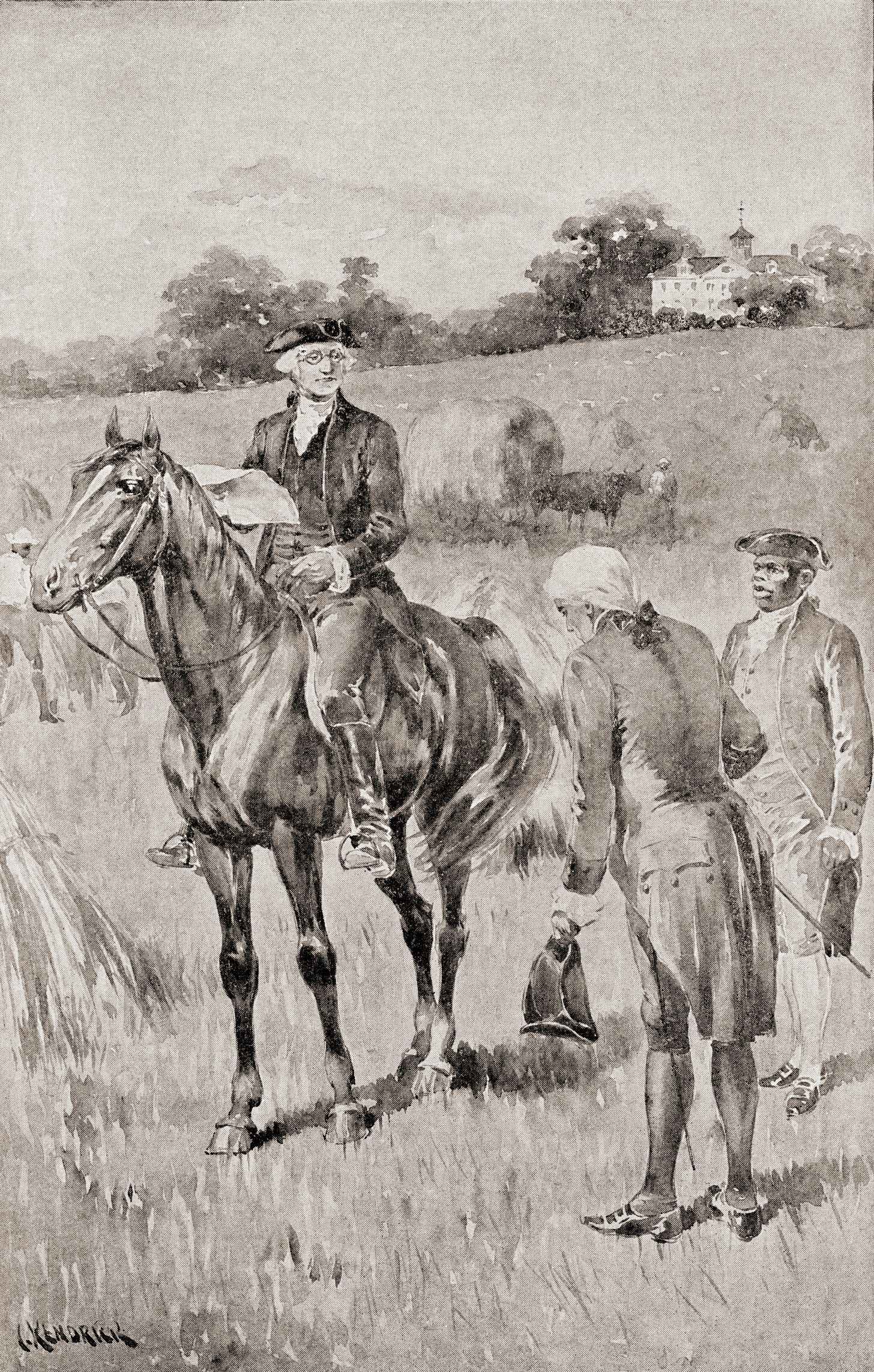
Joe Biden and the Art of the Presidential Farewell
Plus: How George Washington almost ruined his own exit from the national stage.

IT’S ONE OF THE MOST CONSEQUENTIAL DECISIONS a president makes: whether to run for re-election or step aside. It is also one of the most personally difficult. The presidency requires certain ego, ambition, and dreams of a lasting legacy for a person to believe he or she is the one person who should make the toughest decisions. Those characteristics regularly collide with calculations about party and popularity, demography and democracy. And looming in the background is the nearly mythical status of George Washington, the “American Cincinnatus” who set an important precedent by walking away from the highest office.
Tonight, the Democratic convention that was expected to formally bestow upon Joe Biden his party’s nomination for re-election will instead hear him make the case for Kamala Harris. As President Biden steps aside for his vice president, it’s worth revisiting what went into George Washington’s decision to step aside—and to note that the story is more messy and complicated than is usually remembered.
On September 19, 1796, President Washington published his Farewell Address, announcing his intention to retire at the end of his second term. Washington’s decision to step away from power (for the second time) was a radical act. He perfectly orchestrated his departure from the public stage, but then almost undermined everything he had worked so carefully to construct.
The Farewell Address is remembered both for what it symbolizes about our system of government—Washington relinquishing power when he could have easily remained in office for life, and when even his political opponents hoped he would serve a third term—and for its prescience: Its warnings have proved relevant and modern, generation after generation.
The Farewell Address offered three important messages. First, Washington set out a template for international affairs. He believed in trade and a robust American presence on the world stage. He wanted Americans to travel, engage with foreign nations, and exchange ideas and goods. He warned against sending American sailors and soldiers to fight in wars with no implications for American security. But he had no objections to Americans selling or giving goods to allies, nor did he shy away from defending the nation when needed. The Farewell Address is not an isolationist message.
Second, Washington warned against allowing our internal differences to come between us. We might debate religion, education, economic policy, and foreign policy, but we still have more in common as Americans than our differences in opinion. Washington saw partisan identities and clashing loyalties to foreign nations driving Americans apart. He urged his fellow citizens to cherish their American identity above a partisan or diplomatic identity.
Finally, Washington reminded the states that they were stronger as one nation than as separate entities. He spoke to the economic, political, and security benefits provided by union, and warned about the perils of separation.
Since 1796, few presidents have delivered farewell addresses—even fewer were memorable. One notable example came in January 1961, when the departing Dwight D. Eisenhower warned about the strength and influence of the military-industrial complex.
Joe Biden has a rare opportunity to speak to the future without the typical burdens of electoral politics. As his five-decade-long career in public service comes to a close, his Democratic National Convention speech will likely be the last time he will speak to a giant audience. He has ascended above the partisan fray by removing himself from the 2024 race. Biden’s rising approval numbers reveal the shifting public perception about him and his decision not to run again.
Now, no one is confusing President Biden with George Washington. But Biden can use the occasion of tonight’s address to speak to the divisions in our society, which often resemble those in the 1790s. He can urge us to follow our better angels, to set aside our differences, and to embrace our similarities. He can remind us that we are better as one nation than as individual states.
GEORGE WASHINGTON’S EXAMPLE also offers a warning about pitfalls to avoid. For as brilliantly as he managed his retirement announcement and the first peaceful transfer of power, the first president also almost fatally undermined the office of the presidency during the Adams administration.
By the summer of 1795, Washington’s initial cabinet selections had retired or resigned. He struggled to find meritorious replacements to fill the shoes of Thomas Jefferson, Alexander Hamilton, Henry Knox, and Edmund Randolph. He finally settled for loyal Federalists, but regularly lamented their inability to fulfill the demands of their offices.
In 1797, President-elect John Adams had to select his own cabinet. There had never been a transition and he had no reason to get rid of the existing cabinet. He trusted Washington’s judgment, knew how hard it could be to find quality candidates, and believed they would provide institutional stability at a tense moment.
Critically, Washington did not offer Adams any guidance. He did not warn Adams about the secretaries’ weaknesses or encourage the president to select his own advisers. The secretaries would prove to be a thorn in Adams’s side for the next several years, colluding to undermine his foreign policy and re-election chances.
The next year, Washington, although he had retired to Mount Vernon, allowed himself to be pitted against the sitting president, with potentially devastating consequences. As France threatened war, President Adams appointed former President Washington commander-in-chief of the expanded American army.

Secretary of War James McHenry, Secretary of State Timothy Pickering, and Secretary of Treasury Oliver Wolcott Jr., along with their radical Federalist allies, pushed Adams to appoint Alexander Hamilton as the inspector general (the second in command). When Adams refused, the secretaries convinced Washington to threaten his resignation.
Boxed in, Adams had no choice but to appoint Hamilton. Washington’s resignation would destroy Adams’s presidency and undermine any attempt at national unity in the face of war. But Adams was determined to prevent the army from seizing additional power. He spent the next two years pursuing diplomacy and undermining the army’s political agenda.
In 1799, Adams nominated a peace commission, which ultimately signed the Treaty of Mortefontaine with Napoleon. As peace appeared increasingly likely, soldiers deserted in droves and officers returned their commissions. On December 14, 1799, Washington died and immediately underwent an apotheosis.
The combination of Adams’s determined pursuit of diplomacy and Washington’s death eliminated any possibility the army would threaten the presidency. Washington was very lucky his actions didn’t fatally undermine the institutions he had worked so hard to establish.
This example offers important guidance for Biden. It’s not enough to step aside. Retired presidents owe their successors a forthright assessment of potential personnel and global affairs. They should offer their services when required but never allow themselves to be used to undermine the current administration. For Biden, whose plans for campaigning and hopes for governing have been interrupted, tonight is an extraordinary opportunity to lead through valediction. In this lofty goal, he has a good model.
Lindsay M. Chervinsky is a presidential historian and executive director of the George Washington Presidential Library. She is the author of the forthcoming book Making the Presidency: John Adams and the Precedents that Forged the Republic. Social media: @lmchervinsky.
















